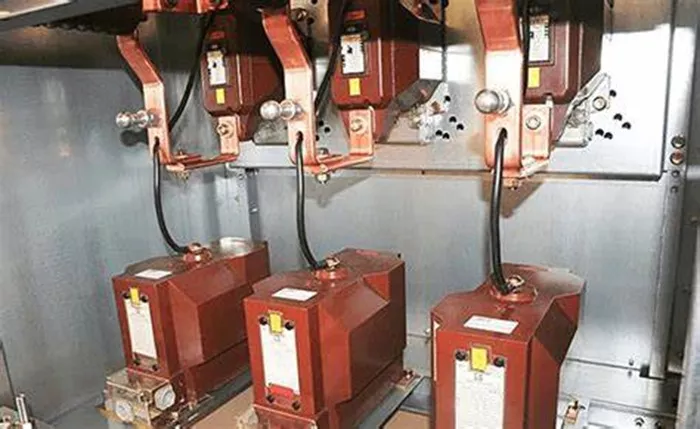Step-up transformers are essential components in modern power transmission systems. They are designed to increase the voltage from a lower level to a higher one, making them crucial for efficient power delivery over long distances. Unlike generators, step-up transformers do not produce electricity but transform voltage levels to ensure power flows efficiently.
The Role of Step-Up Transformers in Power Transmission
Increasing Voltage for Efficient Transmission
The primary function of a step-up transformer is to reduce energy losses during transmission. When electricity is transmitted over long distances, the resistance of the transmission lines causes power losses in the form of heat. By stepping up the voltage, these transformers ensure minimal power loss and increased efficiency. Higher voltage levels reduce the current flow through transmission lines, significantly lowering energy losses due to resistance.
Reducing Transmission Losses
One of the most significant benefits of using step-up transformers is the reduction of transmission losses. By increasing the voltage and reducing the current, the resistive losses are minimized. This efficiency gain is crucial for maintaining the reliability and cost-effectiveness of power delivery, especially over long distances.
Enhancing Grid Stability
Step-up transformers contribute to better voltage regulation across the power grid. By boosting the voltage at the generation point, the voltage drop that occurs during transmission is less significant, ensuring that the voltage levels remain within acceptable ranges when they reach the distribution points. This regulation is vital for maintaining the quality and stability of the power supply to end users.
Supporting Renewable Energy Integration
With the growing emphasis on renewable energy sources, step-up transformers have become essential in integrating power from sources such as wind turbines and solar farms into the grid. These renewable energy sources typically generate electricity at low to medium voltages. Step-up transformers are used to elevate the voltage to match the grid’s transmission levels, facilitating efficient and reliable incorporation of renewable energy into the existing power infrastructure.
Applications of Step-Up Transformers
Power Generation
In power generation, step-up transformers are essential for enhancing voltage levels right at the generation source. By increasing the voltage, they facilitate efficient long-distance transmission of electricity, which is crucial for maintaining grid stability. Higher voltage levels reduce current flow through transmission lines, significantly lowering energy losses due to resistance.
Renewable Energy Sector
In the renewable energy sector, such as solar and wind farms, step-up transformers increase the voltage of generated electricity to match grid requirements, facilitating seamless integration into existing power systems. For example, in wind farms, as turbines produce electricity, step-up transformers elevate the voltage for transmission over long distances, minimizing losses and enhancing efficiency.
Industrial Applications
In industrial settings, step-up transformers are vital for supplying heavy machinery with the high voltage necessary for efficient operation. Many industrial processes, such as metal fabrication and manufacturing, require substantial power to drive large motors and equipment. These transformers increase the voltage from standard supply levels, ensuring that machinery operates optimally without overloading the electrical system.
Advantages of Using Step-Up Transformers
High Efficiency and Reduced Power Losses
Step-up transformers are engineered to maximize efficiency, primarily through their ability to elevate voltage levels while minimizing current flow. By increasing voltage, the power losses due to resistance in transmission lines are significantly reduced. This principle is vital for long-distance electrical transmission, where high currents can lead to substantial energy waste in the form of heat.
Cost-Effective Infrastructure
Higher voltage transmission allows for the use of thinner conductors, as the current is reduced. This reduction in conductor size translates to lower material costs for transmission lines. Additionally, the infrastructure required for high-voltage transmission is generally more economical in terms of maintenance and energy efficiency compared to low-voltage transmission systems.
Improved Voltage Regulation
By boosting the voltage at the generation point, step-up transformers ensure that the voltage drop during transmission is less significant, maintaining stable voltage levels at distribution points. This regulation is vital for ensuring the quality and stability of the power supply to end users.
Scalability and Flexibility
Step-up transformers provide the flexibility to adapt to varying power generation and transmission needs. As the demand for electricity grows and new generation sources come online, the ability to scale up voltage levels efficiently ensures that the power grid can accommodate these changes without extensive modifications. This scalability is vital for the dynamic and evolving nature of modern power systems.
Conclusion
Step-up transformers are indispensable components in modern electrical systems, playing a vital role in enhancing the efficiency and reliability of power transmission. By elevating voltage levels, these transformers minimize transmission losses, support the integration of renewable energy sources, and ensure stable power delivery to end users. Despite the challenges associated with their implementation, the benefits of step-up transformers in terms of improved transmission efficiency, cost-effectiveness, and scalability make them essential for the future of electrical power systems. As the demand for electricity continues to grow and the push for sustainable energy intensifies, step-up transformers will remain a cornerstone of the global power infrastructure, facilitating the seamless flow of electrical energy across vast distances and diverse applications.
Related Topics:

